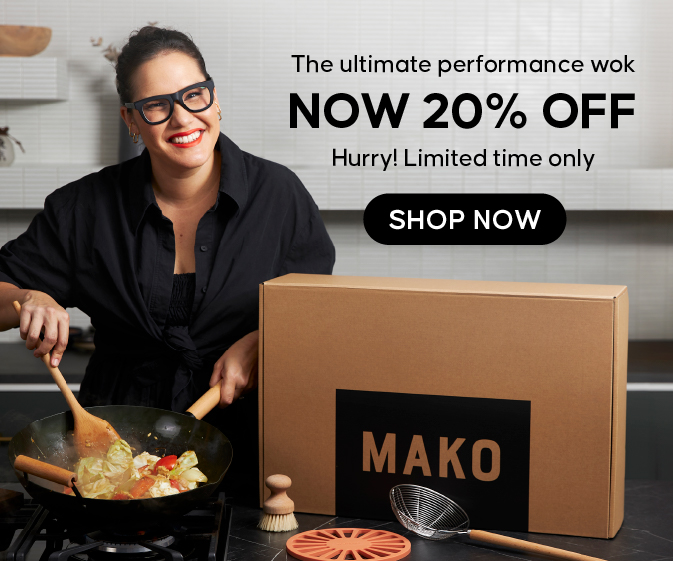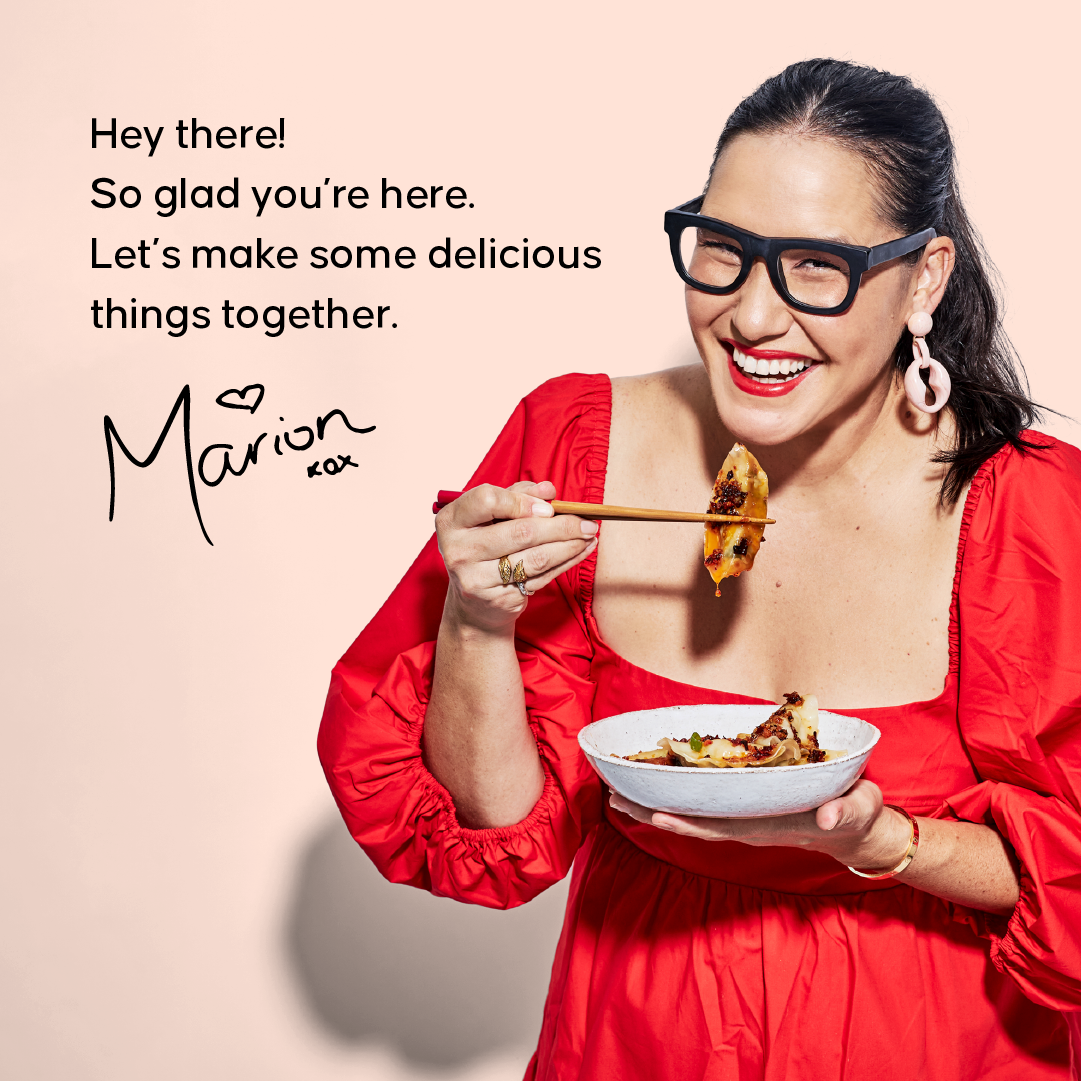
If you know anything about woks, it’s that they’re incredibly versatile. You can cook a whole heap of different things in one, not just stir-fries. Maybe you also know that cooking in a wok is easy, can be very fast, and is incredibly satisfying. You’re so close to the action when you use one, and have amazing control over the heat. A wok builds up a patina over time, and this contributes to the lovely, smoky flavours you can create. There’s nothing like a wok and if you’ve yet to transition to using one, I’m here to help.
Choose the right wok
So many woks, so much confusion. With different materials to consider (stainless steel, carbon steel, non-stick and cast iron), it can be hard to know where to begin. Even handle styles are bewildering! I struggled to find the ultimate wok so I designed my own; the MAKO black steel wok. It incorporates everything I think a wok should be, and have.
- My preferred material is carbon steel. Carbon steel is best for a wok as it is strong, durable and light for ultimate handling and manoeuvrability. Cast iron is super heavy, stainless steel can stick and discolour and non-stick surfaces can’t tolerate high-temperatures.
- Carbon steel has excellent heat conductivity and is highly responsive to changes in heat, making it easy to control.
- A wok should be heavy-duty and durable, with a comfortable handle that makes it feel good to use. I prefer a long, sturdy wooden handle, with a little ‘helper’ handle so lifting and moving a full wok is safe and easy.
- A wok with a flat base, like the MAKO wok, is best for home use as it will sit flat and steady on any stovetop; electric, gas, and even induction.
Season your wok
- Most cast iron and carbon steel woks require initial seasoning when new, plus care and on-going seasoning to maintain the surface.
- Seasoning involves heating your wok until it smokes, adding a layer of oil, cooling, then repeating the process several times until the wok turns a darker colour.
- A pre-seasoned surface means you don’t have to season a wok yourself; seasoning isn’t a hard process but it can seem intimidating. The MAKO wok, for example, is pre-seasoned and good-to-go straight out of the box. It has a non-stick patina that keeps building every time it’s used.
Use the right oils
- A lot of wok cooking is high-heat so you need to use oils with a high smoke point. Which means they can reach very high temperatures before they burn and develop ‘off’ flavours.
- I also prefer oils with a neutral flavour-profile that don’t insert themselves into a dish; you want an oil you won’t notice.
- I avoid using expensive oils in my wok; there’s no need. Plus, when I deep-fry in my wok, I want my oil to be affordable.
- Canola, vegetable, peanut and sunflower all tick the above boxes.
Have the right utensils
These can come down to personal preference. I like:
- an angled wooden spatula for tossing and turning
- sturdy retriever tongs for lifting things out
- a stainless steel strainer for removing and draining when I’m deep-frying
- a ladle for adding or removing liquid, especially when braising. Or topping up the water level when you’re steaming.
I use the ‘chop-stick’ method to test the heat of the cooking oil; you dip wooden chopsticks into hot oil and get tiny bubbles forming on the chopsticks when the oil is hot enough. The faster the bubbles move around the chop sticks, the hotter the oil. So a few sets of cheap wooden chopsticks are very handy.
Collect the right accessories
There are certain other things I can’t live without for wok cooking. These are:
- A tight-fitting lid for when you’re steaming and smoking.
- Different sized bamboo steamer baskets for steaming dumplings, fish, sticky rice, etc. Plus a steamer rack (a small, round metal cake rack works too!) for sitting baskets on when you steam, or plates of food when you smoke.
- Lots of prep bowls for holding all the different prepped ingredients; particularly when cooking stir-fries.
- A brush for gently cleaning your wok; you should never use a metal pot-scrubber.
- A silicone or other type of trivet, so you can place a hot wok directly on the table for serving.
Get started with easy wok-cooking recipes
Start your wok journey with some fail-safe recipes from across the gamut. These will help you get a real ‘feel’ for your wok and what it is capable of…. and what you are capable of too! You might be pleasantly surprised by how easy wok cookery is. Here are some of my all-times favourites that I use – and recommend – all the time.













